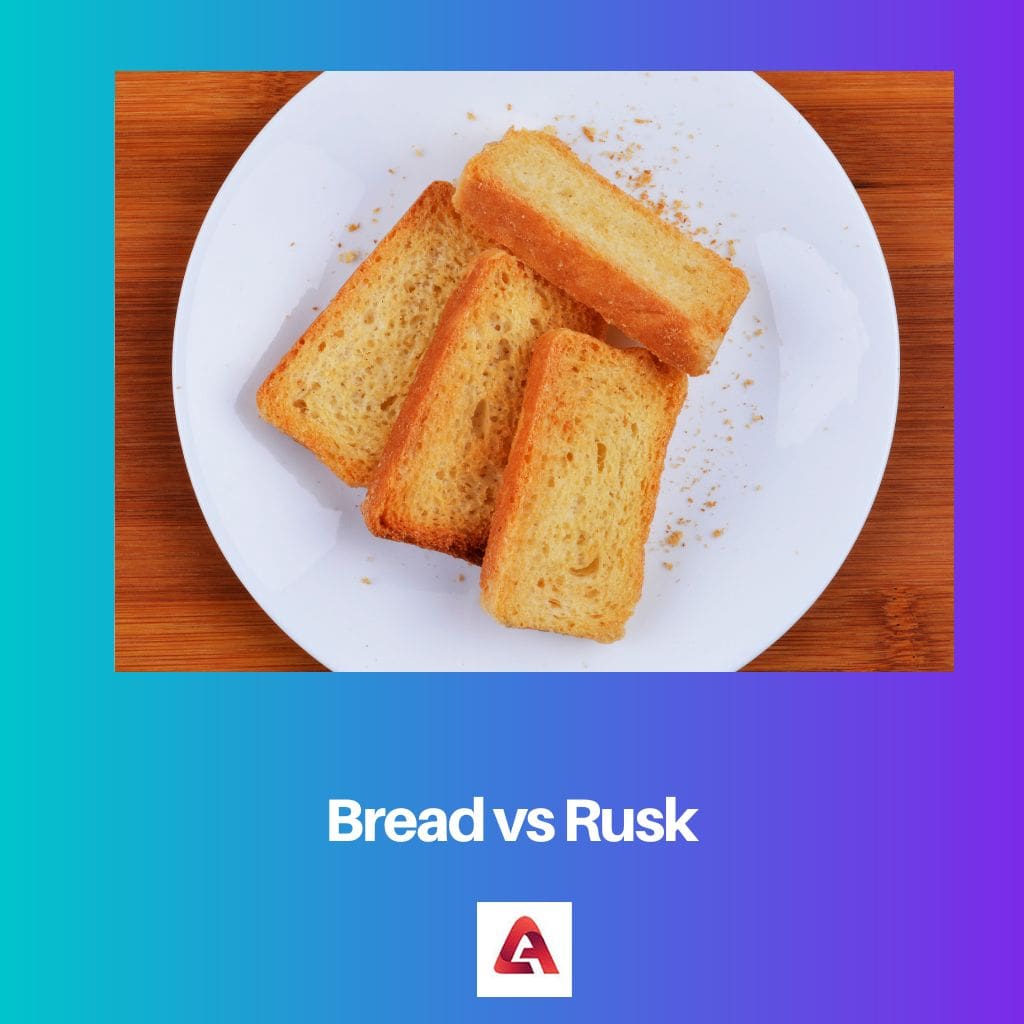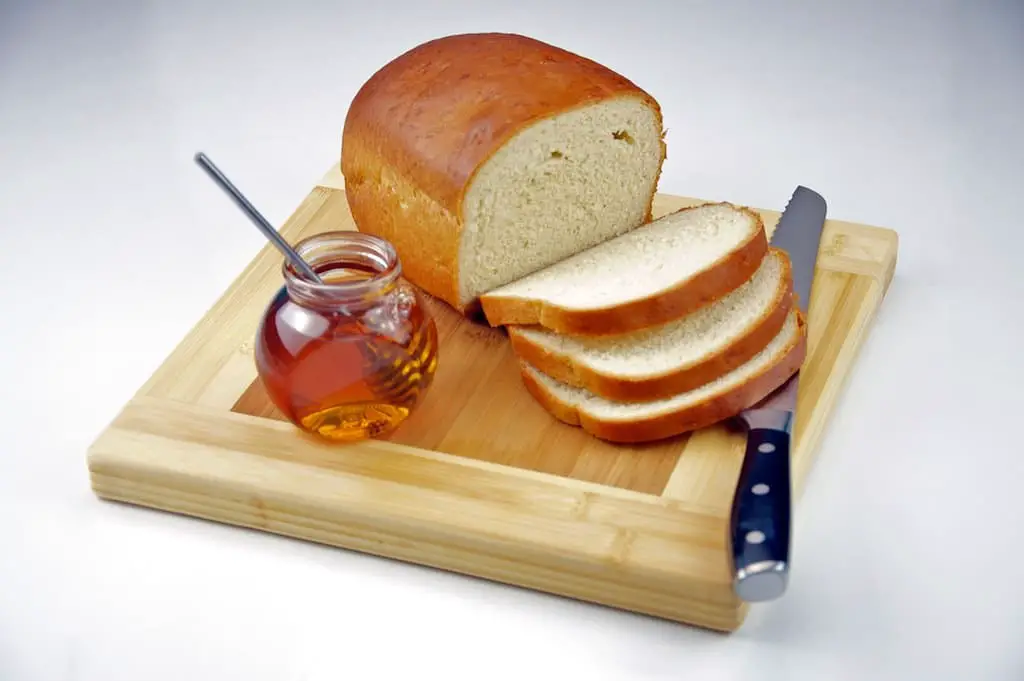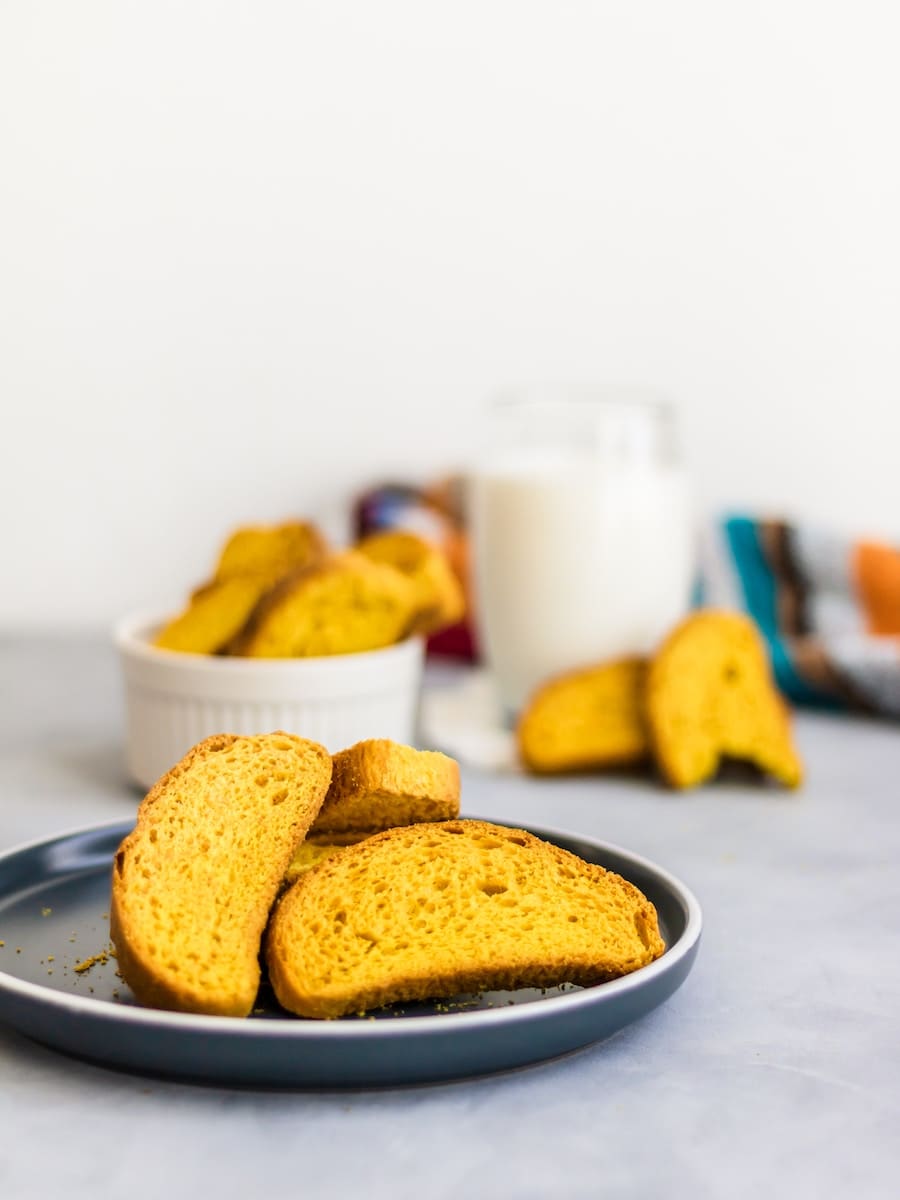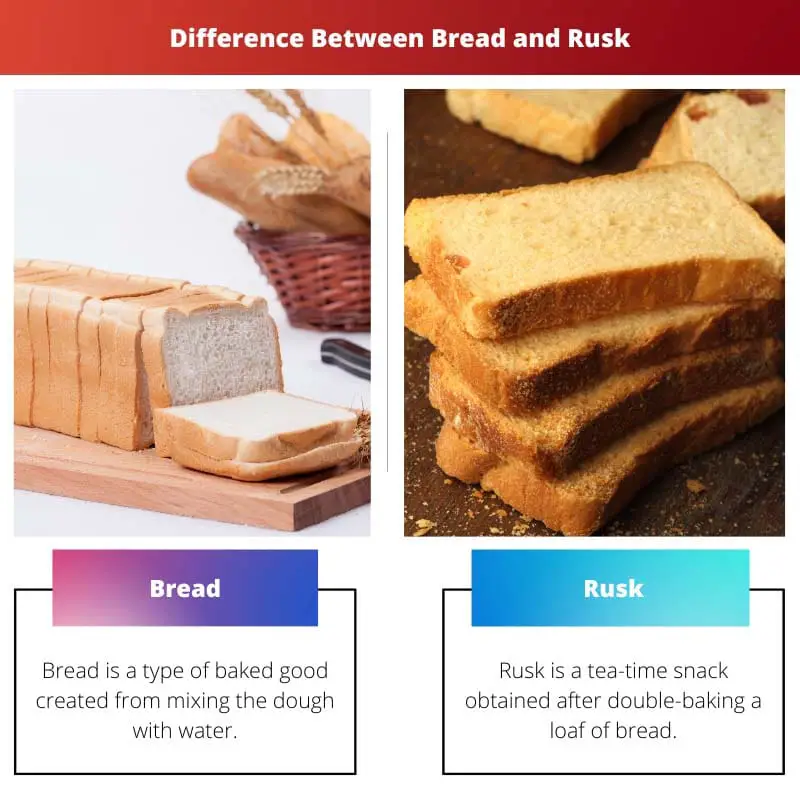Breakfast is the most important meal of the day. For a lot of people, rusk and bread are major components of their meals. Breakfast can never be complete without bread and rusk.
They are types of bread doughs differing by minute processes in the manufacturing of these food items.
Key Takeaways
- Bread is a soft, chewy staple food made from flour, water, yeast, and salt, while rusk is a twice-baked, dry, and crispy derivative.
- Due to their low moisture content, rusks have a longer shelf life than bread.
- The bread serves as a base for various dishes, while rusk is commonly consumed as a snack or breakfast item.
Bread vs Rusk
Bread is a staple food prepared from a dough made of flour and water. It is fermented using yeast and then baked which gives it a soft and pillowy texture. It is only baked once. Rusk is a baked biscuit that has a hard, crispy, and dry texture. It is baked twice to make it crunchy.

Bread is a yeasted dough or a normal dough, baked in the shapes of dinner rolls or small bread loaves.
It is a staple food item baked with additional ingredients such as sugar, salt, and butter to enhance the taste and even texture in some recipes. The loaves are sliced and can be directly eaten.
Rusk is a sweet yeasted bread, baked two times to obtain a crispy texture. It can have a sweet or a plain taste. The brown color is obtained due to its double-baking process.
Rusk is a type of biscuit, similar to biscotti but with a slightly soft surface than biscotti.
Comparison Table
| Parameters of Comparison | Bread | Rusk |
|---|---|---|
| Definition | Bread is a type of baked good created from mixing the dough with water. | Rusk is a tea-time snack obtained after double-baking a loaf of bread. |
| Calories | Less than 250kcal per loaf of bread. | Over 375 kcal for a packet of rusk (100gm) |
| Texture | Fluffy, Pillowy, and Soft | Crispy and Crumble on biting a piece of rusk. |
| Manufacturing Process | Weighing and mixing ingredients- Kneading – Proofing the dough- Rising and folding- Shaping the dough- Final proof- Baking | Mixing the ingredients- Dividing- Moulding and Proofing- First baking- Cooling the bread- Slicing- Second Baking- Cooling- Packing the rusks. |
| Type of Dough | A yeasted dough may or may not be used. | Sweet/Plain yeasted dough is used for the bread for rusk |
What is Bread?
Bread is a popular key food item for people across the globe. The ease, taste, and multi-functional recipes of bread make it a go-to option for a lot of people.
Bread is created by baking a dough of flour and water, with additional ingredients such as salt, sugar, and yeast to improve and enhance the taste and feel of the final product.
The flour is made from the flour of cereals such as wheat, barley, maize, and other grains such as rye. The grains add the necessary nutrients such as starch and protein.
When wheat flour is mixed with water, the water-soluble proteins group albumin, proteoses, and globulin and the non-water-soluble proteins gliadin and glutenin.
The components gliadin and glutenin help in the development of the bread structure and provide it the shape.
Bread contains fiber essential to keep the digestive system functioning. The unknown fact is that the bread contains a prebiotic effect due to the presence of good bacteria from carbs and fiber.
It contains proteins, micro-nutrients such as thiamine, iron, riboflavin, niacin, and calcium.
The folic acid in bread is an important synthetic vitamin B, our body cannot create the folate component on its own, thus it is an essential addition for the body.

What is Rusk?
Rusk is a popular tea-time snack. It is a term, taken from the Spanish term ‘Rosca’ which means a twisted bread roll. Rusk is a sweet yeasted bread or a light bread dough, baked twice in the form of dinner rolls or loaves.
These loaves of bread are then sliced in rectangles or squares. These sices are then baked again in the microwave.
The two commonly used styles and shapes of bread include loaves cut in halves or slices into strips. The flavor of the bread includes plain or slight sugary flavor, baked till the bread gets a toasty flavor.
The texture of the bread is hard, crispy, and browned throughout to get a crumbly surface.
Rusk is considered a biscuit, similar to a biscotti but without the dryness of it. Rusk may contain preservatives and additives and contain a high amount of refined flour ratio.
Some rusks may contain a high amount of sugar differing from brand to brand and cannot be considered as a healthy alternative to some other healthy snack options.
The traditional rusks are baked with semolina, wheat flour, buttermilk, seeds, and grains. The use of wheat for the dough adds to the quality of the rusk as well.

Main Differences Between Bread and Rusk
- Fresh bread is a less processed baked food item than a piece of rusk.
- Bread contains fewer amounts of sugar and other concerning ingredients and has numerous health benefits such as improved digestion, probiotics, iron, folic acid intake, and more. On the other hand, the health benefits of rusk completely depend on the ingredients used. The high use of sugar in rusk may reduce the nutritional value of rusk.
- Bread is a primary product, whereas rusk is further refined by double-frying bread after slicing it into desired shapes and sizes.
- The average calories in a loaf of bread may account for about 232-250 kcal. The average calories in 100grams of rusk amount to over 374-407 kcal.
- The texture of the bread is soft, while the rusk is hard and crumbly in texture.





